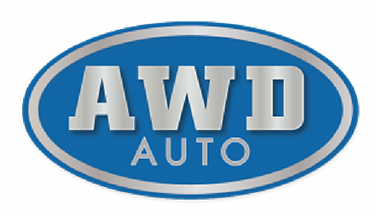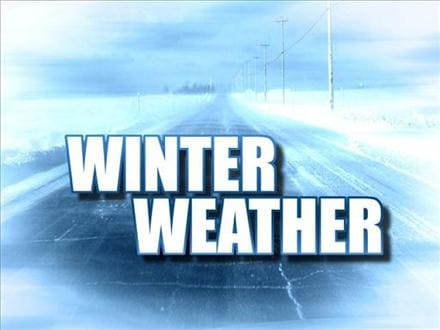Fuel Economy Concerns during the winter.
We seldom have multiple days of cold weather in the Puget Sound region let alone weeks; as such there have been a lot of fuel economy concerns expressed over the last few days, so I thought I would try to explain why your Subaru has such a dip in economy during the colder weather.
When the temperature is below 40 degrees it just takes the engine longer to reach operating temperature, and until it does you just can’t obtain optimum fuel economy, when the roads are slick the All Wheel Drive will engage much more frequently creating more load on the engine thus using more fuel. The battery when cold takes longer to recharge after it is drained to start the car, the longer the alternator load to charge the battery the worse the economy will be. Next when it’s cold you will use the rear defrost and the defrost control for the climate control more frequently the rear defrost is a large electrical draw creating alternator load, the front defrost causes the Ac compressor to cycle on to help hydrate the moisture off of the wind shield which is a load on the engine requiring more fuel. If your Subaru has seat warmers you will probably turn them on, its darker longer this time of the year so the head lights are on longer than normal (if you ever turn them off). How old is your battery? If your battery is more than 4 years old (3 years for original equipment batteries) it may be in need of replacement the mere fact that it starts the car is not an indication of strength. A battery that has become weak will take longer to recover from the load put on it to start the vehicle which again increases the load on the engine because of the alternator on time.
The colder air is denser and requires more fuel to maintain proper efficiency 14.7 to 1. When you add this to being at or near Sea level the effects are huge. Your Subaru has an air temperature sensor and the data inputted to the Vehicle Engine management Computer uses this data to determine the proper pulse width or “on time” of the fuel injectors, this is also done with other data inputs as well such as throttle percent and load. The O2 sensors don’t start creating data for the Computer until they reach the proper temperature, most 1996 and newer vehicles have O2 sensor heaters to hasten the time it takes to start emitting a signal, but just like your house the colder the starting temperature the longer the on time of the heaters to reach temperature, which also creates a huge amperage draw on the electrical system especially on the 2005 and newer cars as there are 4 O2 sensors to heat up. Rate of speed is almost always lower in the winter.
In the Puget Sound area traffic is almost always going to be worse in the winter due to weather patterns and driving conditions also colder air also has an effect on the aerodynamics of the vehicle in the event that you are actually able to get up to speed during your commute.
The Winter Fuel phenomena.
Fuel formulas will vary from season to season, this is most prevalent with the composition of fuel in the summer months versus the colder winter months; this is done mostly to meet emissions and air quality standards. Fuel is blended in a way that it has “lower vapor pressure” in the summer and a “high vapor pressure” in the winter blends. This means the summer fuel evaporates less and contributes less to the “evaporative emissions” which is essentially raw fuel vapor and represents million of gallons of fuel per year evaporated in the air. Winter fuel has proven to be more volatile and evaporates more quickly, so it is ideal for its use in the colder air of winter where temperature won’t increase the evaporation rate and thus will prevent excess fuel vapor making its way into the atmosphere.
In terms of gas mileage, you get better mileage on summer blends than winter blends because the summer blend gasoline has a greater “energy value” than winter blend. So the fuel you are using in winter has a lower energy value than the gas you used in the summer. This means it takes a little more to get the same job done. This translates into lower mileage for you until the spring time, when they will reintroduce summer blend gasoline. This is beyond mileage loss you see with ethanol being blended into both summer and winter fuels which is an entirely a different topic all together, but I will add that the symptoms that can already occur with Ethanol blended fuel become even greater in the winter months . Any and all internal combustion propelled vehicles using blended fuel will see the difference in mileage and fuel consumption between the seasons.
Fluids are a Drag.
You have probably seen terms like 5w30, or 10w40 on oil bottles, what is commonly mistaken is that the “W” pertains to the weight of the oil which is in correct. It stands for winter; during cold weather we need the oil to do its part to reduce friction. Think of it like this you put a few scoops of your favorite of ice cream in a blender and the blender has a hard time trying to turn in the thick substance, now add some milk and the blender picks up speed. Straight 30 oil is like ice cream in the blender, the mechanical rotating assembly really has a hard time turning. Add a dual property to that oil and you have oil that is safe to use in winter. While the engine is running the oil slowly starts to reach temperature, but not the transmission or differentials, it’s not until the car is driven for a bit does the gear oil and transmission fluid start to “thin out a bit”. The dual property of a 75/90 gear oil helps protect the gears and bearings but it does still increase drag a little bit which creates a situation where it takes just a little more throttle to move the car than it would if it was at 50 degrees, this increases fuel consumption as well. Put one bottle of syrup in the Fridge, and the other in the pantry, now take them both out and have a race.
This is one of the reasons I always suggest starting winter out with fresh fluids as fluids break down or collect moisture the ability to lubricate diminishes. . Slow moving oil through a restricted oil filter can create unwanted engine wear as the oil struggles to reach all of the points in the engine before the RPMS are too high. Too much is made out of this or that oil being better, or “I can drive 10k on my synthetic oil and it makes my engine invincible”. If you are due for an oil change the oil, if you haven’t changed the transmission of differential fluids in a while change them! Want to know why some transmissions go the life of the car and never need repairs and some barely make it 4 years, it’s because one or more components was starved for lubrication as a result of a fluid issue.
Things that are important all year long can become crucial during the winter and summer months depending on your Climate. Sometimes it seems like the change can come on so sudden we are just not prepared and we forget the same thing occurred last year. It’s great to be in tune with what is going on with your Subaru, just know that in some cases there is little that can be done other than paying for more fuel this time of the year.
Thanks for Reading
-Justin
//
//


Leave a Reply